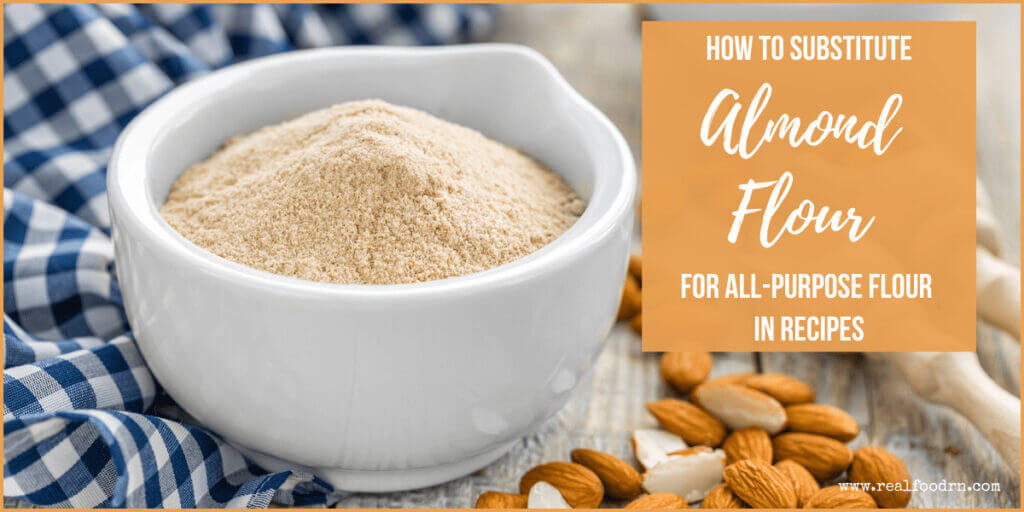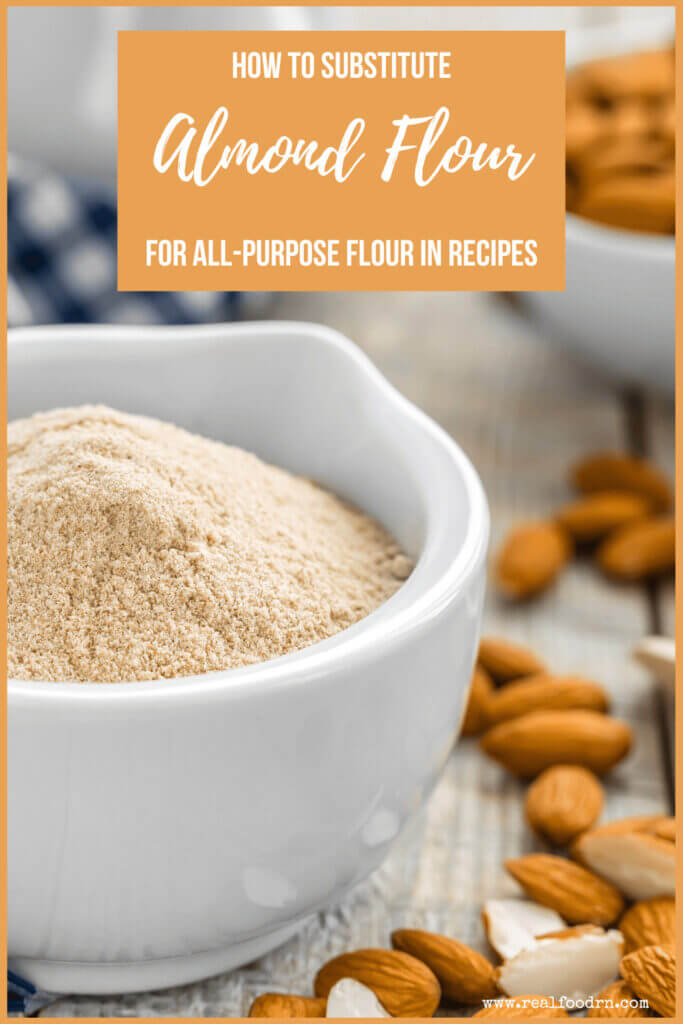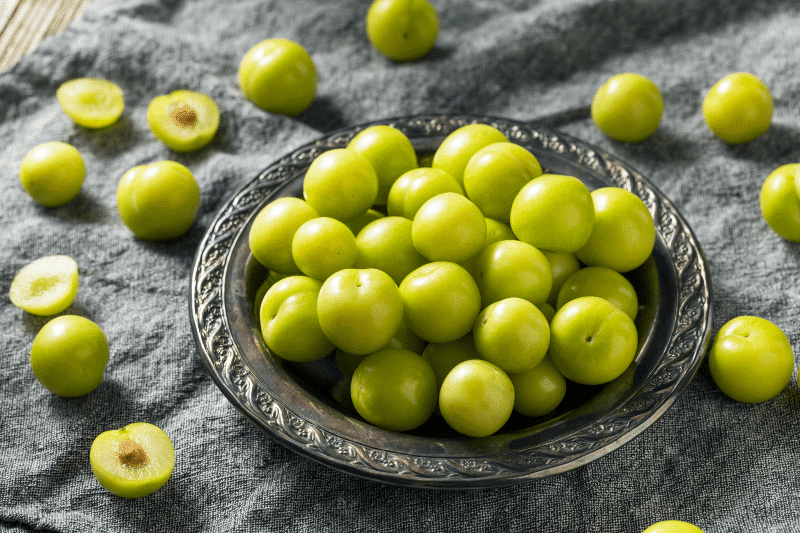
I love to bake, but when we went grain-free as a family several years ago, I was in for quite the learning curve. A grain-free diet can ease inflammation and ultimately help your digestive system in the long run. But, a grain-free diet can also be challenging because, let me tell you, flour, enriched-wheat flour, and all-purpose flour are abundantly used in many, many foods. Read your labels, and you will see what I’m talking about, crunchy mama.
As I experimented with coconut and cassava flours, I stumbled upon one that would become a favorite for my recipes: almond flour. The almond is a seed of the fruit that grows on almond trees. Almonds are delicious and pack a substantial nutritious punch. They are high in monounsaturated fats that are great for heart health. Almonds are also an excellent source of vitamin E.
Almond flour is made from blanched almonds with the skin around the seed removed. That also gives it that light brown color instead of the darker brown you are used to seeing when you look at a raw almond. With it comes the many health benefits and nutrients you receive from good ol’ almonds! It is low carb and, yes, grain-free. It also does not convert to sugar like all-purpose flour AND gives your recipe an extra dose of fiber.
Can You Substitute Almond Flour for Regular Flour?
I’m excited to tell you, yes! You absolutely can. But, like me, it may take some experimentation. Nut flours burn easily, but some recipes can benefit from an additional rising agent. Also, it isn’t a true 1-1 ratio. For example, if your recipe calls for a cup of flour, that will not necessarily translate to a cup of almond flour. Instead, you’ll use a little less, about ¾ a cup, and you won’t pack it tightly as you would all-purpose flour.
Some recipes where you substitute almond flour may require what is called a binding agent. Eggs and egg whites are good ones. Almond flour treats are moister than all-purpose flour treats. Therefore, you’ll want to cool your baked goods in the pan before transferring them to avoid a crumbly mess.
Recipes Using Almond Flour
I’d be remiss if I did not share some of my favorite recipes I’ve tried, where I substituted almond flour.
- Grain-Free Bacon Nuggets: A tasty snack the kids will love. Almond flour is used in the breading. I love this recipe because I get to make it with my kids. Gather the family, prepare your hands, and make this delicious finger food.
- Grain-Free Garlic Cheese Puffs: These aren’t orange and do not come in a bag! Garlic cheese puffs are decadent pastries made with almond flour, garlic, onion powder, egg, and other ingredients you probably have lying around your pantry or spice rack. You can count on this one as another kid-friendly recipe.
- Grain-Free Pina Colada Cheesecake (for adults): We love our kids, but we can’t let them have all the culinary fun, right? This recipe is for adults. It contains various ingredients, including vanilla cookies, gelatin, eggs, cream, and, yes, rum!
- Grain-Free Homemade Berry Crisps: A treat for any season, this crisp is like mini berry pies or crumbles that will satisfy your sweet tooth while providing the nutritional benefits almond flour offers.
You can also make cookies, bagels, scones, muffins, pie crusts, and more using almond flour. Certain cakes may take a few tries to perfect. And just like regular flour, you can use almond flour as a thickening agent for sauces and puddings. All you need is a wire whisk to mix the flour and gently heat it to get to your desired thickness.
One question I get a lot about almond flour is, “Does it taste nutty?” Sometimes you want a nut-free flavor with all the health benefits. This varies from person to person as no two individuals’ taste buds are identical. However, I couldn’t taste the difference. My baked goods and breaded treats taste delicious to my family and me. Truthfully, we don’t miss all-purpose flour at all. And it has been fun discovering new recipes to try.
How to Store Almond Flour
Believe it or not, almond flour goes bad faster than other flour. So it is important that you store it properly to get the most out of your package. Cool environments are best such as the fridge or freezer. Your pantry is the next best spot. An unopened bag can last about 2-4 months in the pantry and about 6-12 months in a fridge or freezer. After opening, seal your flour package tightly to prevent moisture from entering.
Benefits of Going Grain-Free
Whether you are seeking ways to incorporate more nutrients in your daily recipes or considering going grain-free, there are many health benefits. A grain-free diet eliminates gluten-containing grains and non-gluten-containing grains such as barley, rye, oats, wheat, and spelt. The non-gluten grains are amaranth, millet, buckwheat, quinoa, and rice (brown and white).
As I mentioned before, reducing grain consumption may help your digestive system and could possibly reduce inflammation. You do not have to have celiac disease (gluten intolerance) to feel the raging effects of too many processed and refined grains. This is because grains are sugars! And, of course, we should limit our sugar intake to promote a healthy diet.
It is up to you if you want to try substituting almond flour for all-purpose flour. Have fun with the experimentation into you find a recipe that looks and tastes just the way you want it to. If you are feeling adventurous, I suggest you check out other grain-free flour as well, including coconut flour and cassava flour. Suppose you’ve never heard of the latter. In that case, it is made from a crunchy underground tuber popular for centuries with indigenous people of many parts of Africa, Asia, and South American continents.
Enjoy embracing natural ways of eating, living, and being! And check back for more grain-free recipes to share with you and your family.
CLICK HERE to Pin this Post









